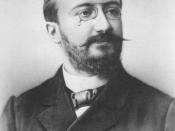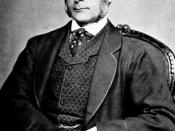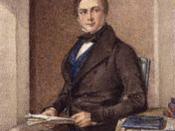One of the most promising and commonly misconceived branches of psychology is School Psychology. Its potential lies in the fact that "...School psychologists are 'humanists first' and therefore are especially interested in primary prevention, not only in schools, but in the community at large" (Phillips, 1990, p.47). The definition of school psychology and what it encompasses has been highly debated for several decades.
As the term school psychology is a misnomer, it may lead one to believe that the field is strictly limited to "therapy sessions" within the school. In actuality, school psychology involves a myriad of responsibilities including, but not limited to, assessment, intervention, consultation, research, inservice education, and supervision. School psychology evolved in large part from the interest of American public schools, especially those school systems in large cities, in having more precise ways to identify and classify children for the purpose of providing special education" (Reynolds & Gutkin, 1982 p.4).
Furthermore, "...school psychology's major goals have been to provide direct and indirect psychological services to children and youth to improve their mental health and educational development" (Reynolds, Gutkin, Elliot, and Witt, 1984, p.1).
Many of the greatest contributions to the field of school psychology are attributed to Lightner Whitmer, Sir Francis Galton, and Alfred Binet. Through their brilliance, creativity, and innovation, these individuals have succeeded in establishing the foundation of what is now known as school psychology. "Lightner Whitmer, the acknowledged founder of both clinical and school psychology, got them started" (Phillips, 1990, p.7).
Sir Francis Galton is accredited with implementing one of the most imperative and commonly practiced aspects of school psychology. "...he devised tests of vision, hearing, reaction time, and discrimination and persuaded school personnel to keep systematic records of how students performed on such tests" (Reynolds, Gutkin, Elliot, & Witt, 1984, p.5).



Not high school material
This paper was so well done, I have a hard time believing that is was done by a high school student. This is a complement to the author. I loved the paper and read it all. I too plan on becoming a school psychologist some day.
1 out of 1 people found this comment useful.